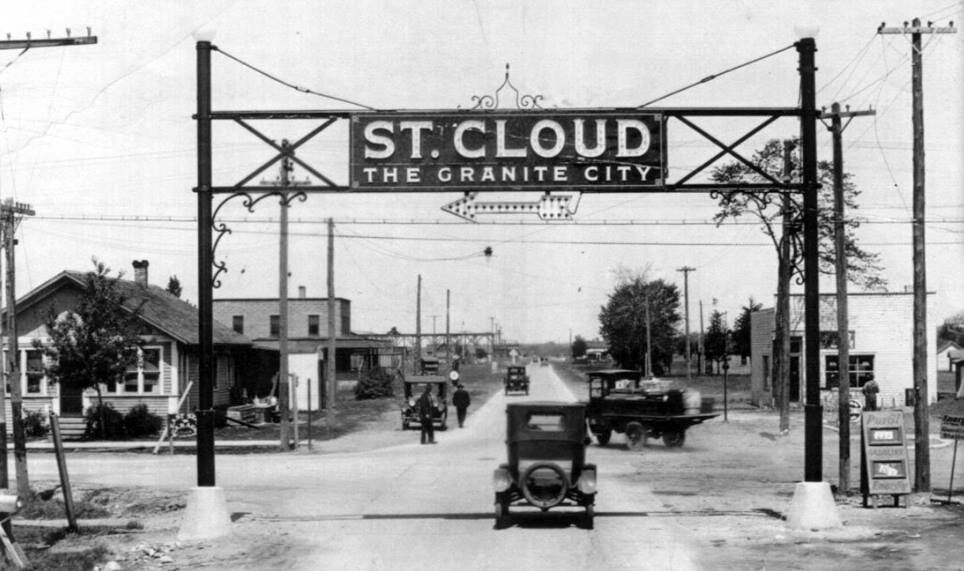Jefferson Highway Through St. Cloud
Lincoln Avenue, located on the east side of St. Cloud, became part of the Jefferson Highway system in 1916. Edwin T. Meredith of Iowa believed an international highway from New Orleans to Winnipeg would be economically beneficial to farmers and promoted his idea in states along the proposed route. A committee determined that the Minnesota route would enter the state at Albert Lea and proceed through Owatonna, Faribault, Northfield, and Farmington before arriving in the Twin Cities. From there it would pass through Osseo, Anoka, Elk River, St. Cloud, and Little Falls before turning northwest. The entire route was completed in 1922 and was touted as the longest paved road in the United States.

Portions of the Jefferson Highway still retain its name in several states—including sections near Osseo and Wadena—but in many places, it was replaced with a numbered highway system in the mid-1920s. Lincoln Avenue became part of U.S. Highway 10 in November 1926. In 1953, a new four-lane highway was constructed just east of Lincoln Avenue, and the route was discontinued in St. Cloud by late-1958.
